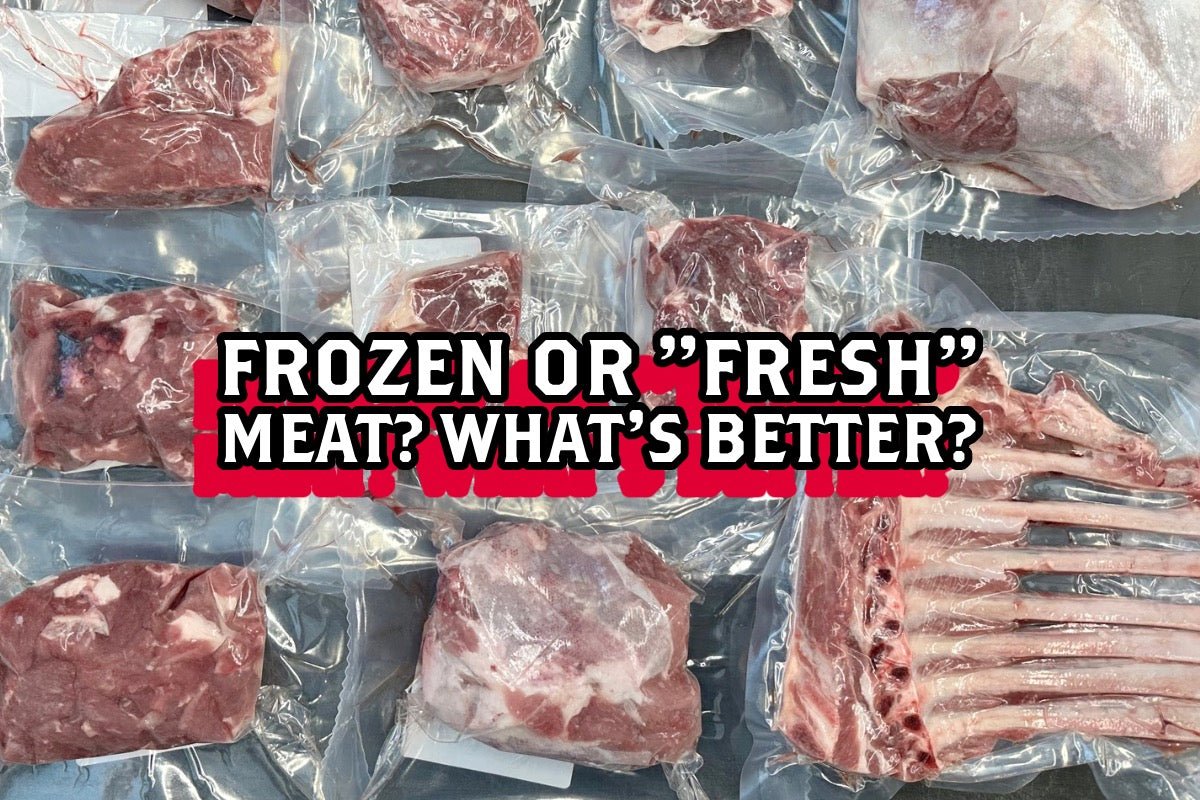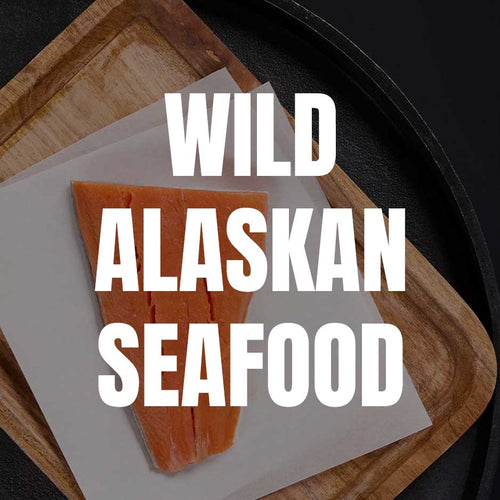
· By Jenni Bajema
Frozen or "Fresh" Meat? 🤨 What's better?
Fresh or Frozen?
Right off, these terms don't mean what you think they mean.
You may think that "Fresh" is the most recently processed, never frozen meat and therefore must be better than "Frozen", right?
According to the USDA, it's MUCH more complicated than that...
"Fresh"
These are the USDA guidelines when you CANNOT use "Fresh"
👉Any cured product.
👉Any canned.
👉Any raw poultry, poultry part, or any edible portion thereof whose internal temperature has ever been below 26 degrees Fahrenheit.
👉Any injected, basted, marinated poultry, poultry part or any edible portion thereof whose internal temperature has ever been below 26 degrees Fahrenheit.
👉Any other finished processed poultry product (including cooked poultry products) where its temperature has ever been below 26 degrees Fahrenheit, e.g., turkey sausage, chicken meatballs, cooked breaded chicken nuggets, etc.
👉Any uncured red meat product permitted to be treated with a substance that delays discoloration, such as, ascorbic acid, erythorbic acid, or citric acid.
👉Any product treated with an antimicrobial substance or irradiated.
How madly confusing is that to you? I have two major takeaways:
1. Last time I checked, freezing temperature was 32°F. Correct me if I'm wrong...
2. Any meat bought at the store that doesn't contain the "Fresh" label has either been previously frozen, treated for discoloration or sprayed with an antimicrobial substance.
I haven't bought conventional meat in about 5 years, but this makes me want to go out and check all the labeling at the grocery store immediately.
"Never Frozen"
I'm going to challenge your common sense radar again: What does "Never Frozen" mean to you?
Here is what it means to the USDA:
Once again, directly from the USDA site: "The phrase "never frozen" or similar verbiage is not permitted on an unprocessed or processed poultry product where the internal temperature of the product has ever been below 0 degrees Fahrenheit or on any red meat product that has ever been frozen."
Let me put this in layman's terms: . Poultry that was rock hard solid frozen at 0°F can be thawed and then labeled as "Never Frozen" by USDA guidelines.
Secondary Products
Let's take this one more step further down the rabbit hole.
Secondary products sold in the refrigerated section, (Pizza, prepared meals, dinners, etc) can be labeled as "Fresh" regardless of whether the ingredients were previously frozen or not.
Now I am even confused with what fresh means...
Aren't you happy the USDA is looking our for your best interests in labeling? How could you possibly determine "Fresh" from "Never Frozen" from "Frozen" without them?

What About Rebel Proteins?👆
Do you still think "fresh" is the best?
At Rebel, our products are proudly frozen fresh. We believe this freshness goes above and beyond what the USDA labels as "Fresh". This is our process:
👉The animal is killed humanely and swiftly.
👉The carcass is handled correctly and safely and allowed to rest.
👉Butchering is done professionaly and uses the carcass efficiently.
👉The meat is held at a safe temperature and frozen quickly after processing to retain nutrients.
👉The meat continues to be held at a consistent frozen temperature to maintain the "freshness" of the meat.
👉Orders are packed in environmentally friendly insulated packaging and dry ice to keep it as cold as possible until it reaches your door.
💯Once frozen, our products stay frozen whether it is at the processors, transporting or in our freezers.
💯Our products are deeply frozen immediately to maintain nutritional quality and keep bacteria, mold and other pathogens from growing.
Because we freeze our meat fresh, we don't need to process just to meet customers demand. This allows us to raise and process animals at the optimum time for sustainability and nutrition.
This is why we believe it's better to cook from the freezer and not the fridge.
How do you know what to choose?
If you are buying meat based off of labels from the grocery store, you are saying to the USDA, "I trust you to research this product, inspect this product and correctly label and categorize this product." And just look at where that has gotten us today...
I've said it before, and I'll say it again. The only way to know what you are eating is to know where your food comes from.
Know your farmer.
Because we give a damn,
Jenni Bajema
Rebel Pastures
Share:
2 comments
-
Thank you for the info. It’s worth knowing.
Leo on
-
I’m so excited I found you! I’m also a Michigan resident who has recently been diagnosed with Mast Cell Activation Syndrome. A mouth full, I know and as a Registered Nurse I’d never even heard of it. The driving force of this condition is histamine which is found in processed foods, degrading fruit and vegetables and meat! As soon as a food is cooked it starts to build up histamine so it has to be consumed or frozen immediately so as to not make me sick. Meat in particular can be high in histamine from the aging process or not being frozen soon after it is harvested. Processed meats like bacon and sausage are particularly high in histamine just due to the curing process. Because of these reasons, meat is probably the number one product that has gotten me sick. At the grocery it’s impossible to know how the meat was handled. I’m so glad to read your process and know that your meat is frozen after slaughter! I have been searching for somewhere to purchase meat and so happy it’s from my home state!
Lisa on











